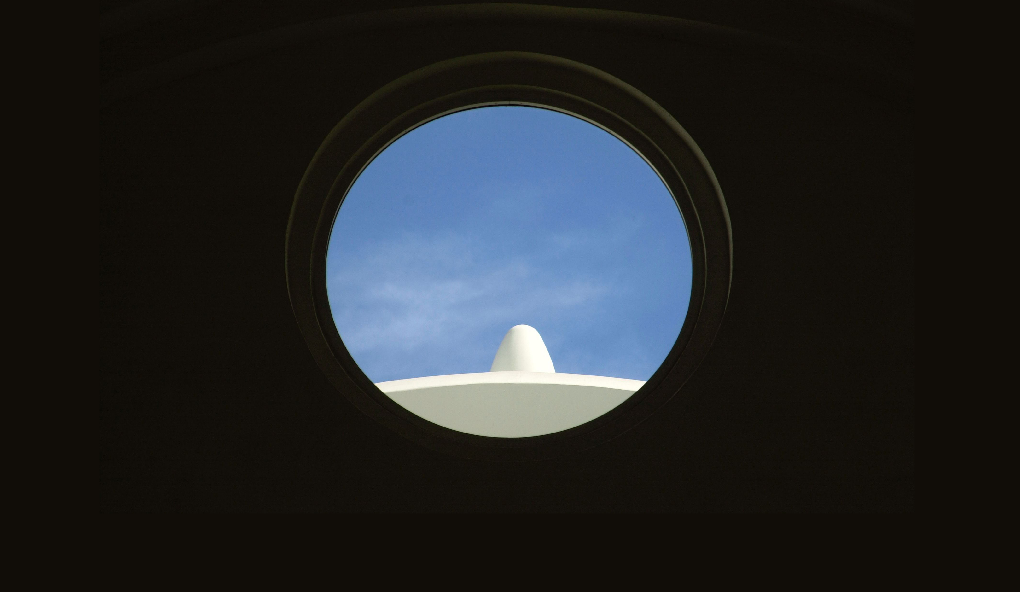Chapter 7. The Aperture Problem
7.1 Title slide

The Aperture Problem
Interact with animated displays to explore the aperture problem.
CLICK ANYWHERE TO BEGIN
Photo: © Keith Levit / Alamy.
What Is the Aperture Problem, and How Does the Visual System Solve It?
To solve the aperture problem, the visual system needs to combine the information contained in the signals from multiple V1 neurons in order to assess motion over a larger area of the retina than that seen by individual V1 neurons. This is a process that neurons in area MT are well suited to carry out. Neurons in MT have much larger receptive fields than those in V1, which means they receive signals from multiple V1 neurons. An MT neuron that could combine the information in the signals from multiple V1 neurons could unambiguously indicate an object's direction of motion based on the different patterns of responses by the V1 neurons.
7.2 Explain
What Is the Aperture Problem?
Clearly, these objects are moving in different directions. But would that still be clear
if you viewed the objects through small apertures? Click SHOW APERTURES to see.
7.3 Explain
How Does the Visual System Solve the Aperture Problem?
Four V1 neurons are tuned for the direction fo the motion indicated by the arrows. Click on the directions of motion of the object. Note which neurons are activated by each direction of motion. To understand why a neuron is activated or not, look at the direction of motion of the edge of the object within the aperture of the neuron's receptive field, and compare that direction of motion with the neuron's direction tuning. Click HIDE OBJECT to hide the object outside the apertures.
Is there a unique pattern of activation associated with each direction of motion?
Click WHAT'S GOING ON? for the answer.
7.4 Explain
What Is the Aperture Problem, and How Does the Visual System Solve It?
V1 neurons have small receptive fields, which means that any one V1 neuron monitors just a small part of the retinal image. All that a V1 neuron "sees" is what's happening within its receptive field. This is called the aperture problem, because a V1 neuron, in effect, views the world through a small aperture and has no way of "knowing" what's going on elsewhere in the retinal image. Because of the aperture problem, any given direction-tuned V1 neuron will often fail to produce an accurate representation of the direction of motion of an object with a retinal image larger than the neuron's receptive field.
To solve the aperture problem, the visual system needs to combine the information contained in the signals from multiple V1 neurons in order to assess motion over a larger area of the retina than that seen by individual V1 neurons. This is a process that neurons in area MT are well suited to carry out. Neurons in MT have much larger receptive fields than those in V1, which means they receive signals from multiple V1 neurons. An MT neuron that could combine the information in the signals from multiple V1 neurons could unambiguously indicate an object's direction of motion based on the different patterns of responses by the V1 neurons.
7.5 Test - single choice
Select your answer to the question below. Then click SUBMIT.
The following statements are all true. Which one relates to the aperture problem?
The correct answer is D.
Click EXPLAIN if you want to review this topic.
7.6 Test - single choice
Select your answer to the question below. Then click SUBMIT.
Which of the following statements explains why the aperture problem is a problem?
an object.
The correct answer is A.
Click EXPLAIN if you want to review this topic.
7.7 Test - single choice
Select your answer to the question below. Then click SUBMIT.
How does the visual system solve the aperture problem?
The correct answer is C.
Click EXPLAIN if you want to review this topic.
7.8 Activity completed
The Aperture Problem.